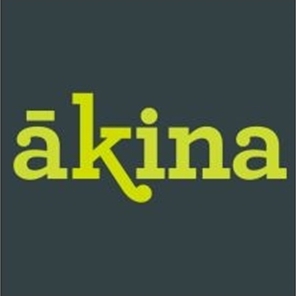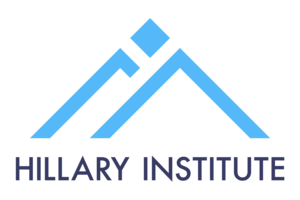Growth Of Cybercrime Continues Despite Downturn
Cybercrime’s Financial And Geographic Growth Shows No Slowdown During The Global Economic Crisis
Symantec
blocks an average of 100 potential attacks per second in
2009
Symantec
Corp. (Nasdaq: SYMC) today released its new
internet Security Threat Report volume XV, which highlights
key trends in cybercrime from 1 January 2009 to 31 December
2009. In a year bookended by two very prominent cyber
attacks – Conficker in the opening months of the
year and Hydraq at the very end – Symantec’s
Internet Security Threat Report reveals continued growth in
both the volume and sophistication of cybercrime
attacks.
“Attacks have evolved from simple scams to highly sophisticated espionage campaigns targeting some of the world’s largest corporations and government entities,” said Stephen Trilling, senior vice president, Security Technology and Response, Symantec. “The scale of these attacks and the fact that they originate from across the world, makes this a truly international problem requiring the cooperation of both the private sector and world governments.”
Craig Scroggie, Symantec vice president Pacific region says that once again the most common propagation method for malicious code in the Asia Pacific region is file-sharing executables.
“In the Asia Pacific region, 90 percent of confidential information threats allowed remote access. This is a big increase on 2008 when 69 percent of confidential threats allowed remote access.
“The best way to protect yourself is to use internet security solutions that combine antivirus, firewall, intrusion detection and vulnerability management for maximum protection against malicious code and other threats. And make sure your security patches and virus definitions are up-to-date.”
Notable trends highlighted in this year’s report include:
• An increase in the number of targeted threats focused on enterprises. Given the potential for monetary gain from compromised corporate intellectual property (IP), cybercriminals have turned their attention toward enterprises. The report found that attackers are leveraging the abundance of personal information openly available on social networking sites to synthesise socially engineered attacks on key individuals within targeted companies. Hydraq gained a great deal of notoriety at the beginning of 2010, but was only the latest in a long line of such targeted attacks including Shadow Network in 2009 and Ghostnet in 2008.
• Attack toolkits make
cybercrime easier than ever. Cybercrime attack
toolkits have lowered the bar to entry for new
cybercriminals, making it easy for unskilled attackers to
compromise computers and steal information. One such toolkit
called Zeus (Zbot), which can be purchased for
as little as US$700, automates the process of creating
customised malware capable of stealing personal information.
Using kits like Zeus, attackers created literally millions
of new malicious code variants in an effort to evade
detection by security software.
• Web-based
attacks continued to grow unabated. Today’s
attackers leverage social engineering techniques to lure
unsuspecting users to malicious websites. These websites
then attack the victim’s web browser and vulnerable
plug-ins normally used to view video or document files. In
particular, 2009 saw dramatic growth in the number of
web-based attacks targeted at PDF viewers; this accounted
for 49 percent of observed web-based attacks. This is a
sizeable increase from the 11 percent reported in 2008.
• Malicious activity takes
root in emerging countries. The report saw firm
signs that malicious activity is now taking root in
countries with an emerging broadband infrastructure, such as
Brazil, India, Poland, Vietnam and Russia. In 2009, these
countries moved up the rankings as a source and target of
malicious activity by cybercriminals. The findings from the
report suggest that government crackdowns in developed
countries have led cybercriminals to launch their attacks
from the developing world, where they are less likely to be
prosecuted.
Other ISTR
Highlights:
• Malicious code is more
rampant than ever. In 2009, Symantec identified
more than 240 million distinct new malicious programmes, a
100 percent increase over 2008.
• Top threats. The Sality.AE virus, the Brisv Trojan and the SillyFDC worm were the threats most frequently blocked by Symantec security software in 2009.
• Downadup (Conficker) still very prevalent. It was estimated that Downadup was on more than 6.5 million PCs worldwide at the end of 2009. Thus far, machines still infected with Downadup/Conficker have not been utilised for any significant criminal activity, but the threat remains a viable one.
• Compromised identity information continues to grow. Sixty percent of all data breaches that exposed identities were the result of hacking. In a sign that this issue is not limited to a few larger enterprises, the Symantec State of Enterprise Security Report 2010 reported that 75 percent of enterprises surveyed experienced some form of cyber attack in 2009.
• Another turbulent year for spam. In 2009, spam made up 88 percent of all e-mail observed by Symantec, with a high of 90.4 percent in May and a low of 73.7 percent in February. Of the 107 billion spam messages distributed globally per day on average, 85 percent were from botnets. The 10 major bot networks, including Cutwail, Rustock and Mega-D now control at least 5 million compromised computers. Throughout 2009, Symantec saw botnet infected computers being advertised in the underground economy for as little as US$0.03 per computer.
• Applying security patches continues to be a challenge for many users. The report found that maintaining a secure, patched system became more challenging than ever in 2009. Moreover, many users are failing to patch even very old vulnerabilities. For example, the Microsoft Internet Explorer ADODB.Stream Object File Installation Weakness was published on 23August 2003, and fixes have been available since July 2, 2004, yet it was the second-most attacked web-based vulnerability in 2009.
Click to
Tweet
• In 2009, Symantec blocks an average of 100
potential attacks per second
http://bit.ly/b6sp23
• Symantec releases new Threat Report:
Cybercrime’s Growth Shows No Slowdown during Economic
Crisis http://bit.ly/b6sp23
• Growth in threats focused on enterprises.
Symantec finds attackers use personal info found on social
sites http://bit.ly/b6sp23
• Toolkits make cybercrime easier than ever
for unskilled cybercriminals to compromise PCs and steal
info http://bit.ly/b6sp23
• Today’s attackers use
social engineering techniques to lure users to malicious
websites http://bit.ly/b6sp23
• Dramatic growth in targeted at PDF viewers,
accounting for 49 percent of Web-based attacks in 2009
http://bit.ly/b6sp23
• Malicious activity takes root in countries
w/ emerging broadband infrastructure
http://bit.ly/b6sp23
Connect with
Symantec
• Symantec Security Response on
Twitter
• Symantec on
Facebook
Resources
• Symantec Internet
Security Threat Report XV Microsite
• Threat Landscape
Overview on Slide Share
• Symantec
Security Response Blog
• Industry
Resources at Delicious.com
• 2010 State of Enterprise Security
Report
• 2010 State of Enterprise Security on
SlideShare
ENDS


 Business Canterbury: Urges Council To Cut Costs, Not Ambition For City
Business Canterbury: Urges Council To Cut Costs, Not Ambition For City Wellington Airport: On Track For Net Zero Emissions By 2028
Wellington Airport: On Track For Net Zero Emissions By 2028 Landcare Research: ANZAC Gall Fly Release Promises Natural Solution To Weed Threat
Landcare Research: ANZAC Gall Fly Release Promises Natural Solution To Weed Threat NZ Anti-Vivisection Society: Auckland Rat Lovers Unite!
NZ Anti-Vivisection Society: Auckland Rat Lovers Unite! University of Canterbury: $1.35 Million Grant To Study Lion-like Jumping Spiders
University of Canterbury: $1.35 Million Grant To Study Lion-like Jumping Spiders Federated Farmers: Government Ends War On Farming
Federated Farmers: Government Ends War On Farming



